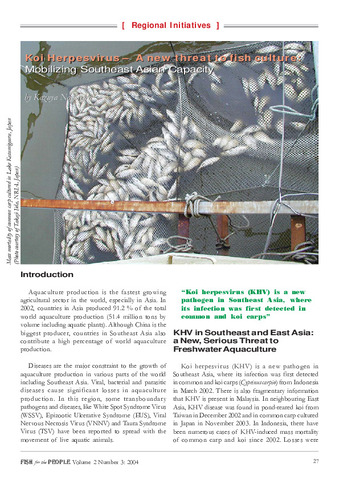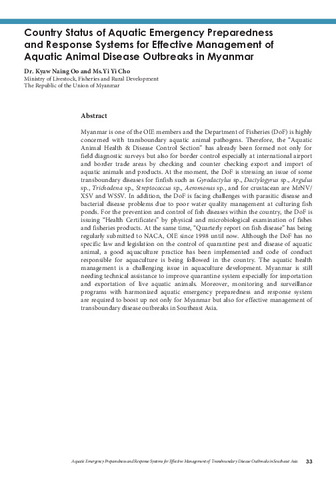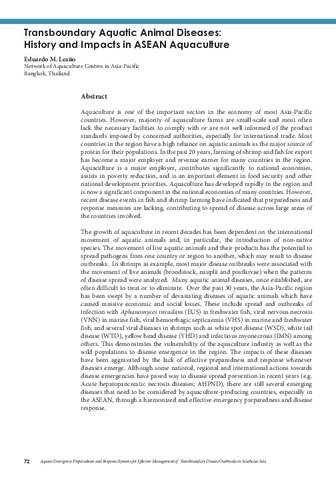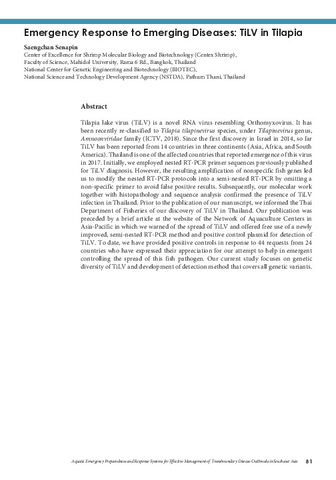Koi Herpesvirus – A new threat to fish culture: Mobilizing Southeast Asian capacity
Share
Abstract
Koi herpesvirus (KHV) is a new pathogen in Southeast Asia, where its infection was first detected in common and koi carps (Cyprinus carpio) from Indonesia in March 2002. Since then, in Indonesia there have been numerous cases of KHV-induced mass mortality of common and koi carp. The former species is an important food resource in the rural areas of Southeast Asia and is abundantly cultured, especially in Indonesia, whereas the latter is internationally traded as an ornamental fish among Southeast Asian countries. Considering its high virulence and devastating impact on both food and ornamental aquaculture sectors, KHV is regarded as a new and very serious threat to carp culture in the region. Details are given of the Regional Fish Disease Project of SEAFDEC, highlighting also the activities of SEAFDEC for KHV disease under this project.
Suggested Citation
Nagasawa, K. (2004). Koi Herpesvirus – A new threat to fish culture: Mobilizing Southeast Asian capacity. Fish for the People , 2(3), 27-32. http://hdl.handle.net/20.500.12066/693
Subject
Collections
Related items
Showing items related by title, author, creator and subject.
-
Country status of aquatic emergency preparedness and response systems for effective management of aquatic animal disease outbreaks in Myanmar
Oo, Kyaw Naing; Cho, Yi Yi (Aquaculture Department, Southeast Asian Fisheries Development Center, 2019)Myanmar is one of the OIE members and the Department of Fisheries (DoF) is highly concerned with transboundary aquatic animal pathogens. Therefore, the Aquatic Animal Health & Disease Control Section has already been ... -
Transboundary aquatic animal diseases: History and impacts in ASEAN aquaculture
Leaño, Eduardo M. (Aquaculture Department, Southeast Asian Fisheries Development Center, 2019)Aquaculture is one of the important sectors in the economy of most Asia-Pacific countries. However, majority of aquaculture farms are small-scale and most often lack the necessary facilities to comply with or are not well ... -
Emergency response to emerging diseases: TiLV in tilapia
Senapin, Saengchan (Aquaculture Department, Southeast Asian Fisheries Development Center, 2019)Tilapia lake virus (TiLV) is a novel RNA virus resembling Orthomyxovirus. It has been recently re-classified to Tilapia tilapinevirus species, under Tilapinevirus genus, Amnoonviridae family (ICTV, 2018). Since the first ...





